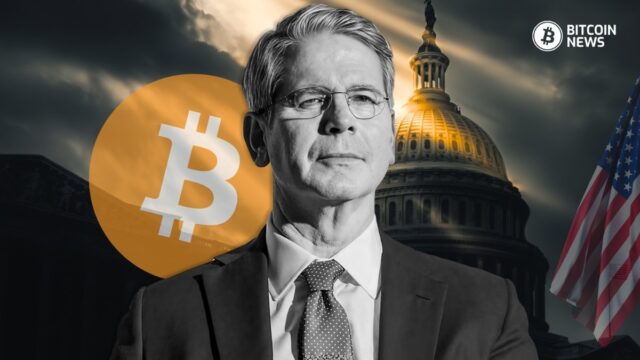U.S. Treasury Secretary Scott Bessent marked the 17th birthday of the Bitcoin white paper in a way that sent shockwaves through both the world of politics and the world of digital assets.
He posted on X, praising the reliability of Bitcoin while tossing a little jab at Senate Democrats because of the ongoing federal government shutdown.
“17 years after the white paper, the Bitcoin network is still operational and more resilient than ever,” Bessent noted, “Bitcoin never shuts down. @SenateDems could learn something from that.”
The Treasury Secretary’s message came at a moment when the U.S. government had been shut down for over a month & counting, and this left around 900,000 employees plus millions more working without getting paid.
Bessent’s point of comparison between the scarce digital asset’s uninterrupted operation and the political chaos on Capitol Hill certainly got people’s attention.
October 31 holds special significance in the Bitcoin world. It marks the date when Satoshi Nakamoto released the nine-page White Paper in 2008, outlining a vision for a decentralized, peer-to-peer electronic cash system.
Since its launch in January 2009, the Bitcoin network has been online 99.99% of the time—a fact often celebrated by its supporters.
Bessent’s post turned that anniversary celebration into a broader political and economic statement. His choice to tag Senate Democrats underscored the partisan nature of Washington’s funding deadlock, which has now become one of the longest shutdowns in U.S. history.
While the post was short, its impact was immediate. Traders, analysts, and policymakers flooded X with reactions. Some viewed Bessent’s remarks as more than just a celebration — they saw it as a policy signal from the Treasury.
James Lavish, a director at bitcoin treasury firm Strive, wrote, “Pay attention to the signals. This is a signal.”
Many interpreted the statement as confirmation that the Trump administration remains committed to digital assets, following a series of comments and policies in recent months.
Earlier this year, Bessent described stablecoins as a “revolution in digital finance” after President Donald Trump signed the GENIUS Act, which aims to modernize digital payment infrastructure.
He also hinted that the Treasury was exploring “budget-neutral pathways to acquire more bitcoin” to expand the Strategic Bitcoin Reserve.
Related: Congress Bill Demands Strategic Bitcoin Reserve Plans in 90 Days
Just a few years ago, Washington’s attitude toward digital assets was far less friendly. Policymakers often painted digital assets as tools for criminals or a threat to financial stability.
Many in the community referred to this period as “Operation Chokepoint 2.0,” a time when banks distanced themselves from digital asset firms and startups struggled to access financial services.
Bessent’s recent comments mark a striking reversal.
Hearing the Treasury Secretary describe Bitcoin as something the government should study and take lessons from—instead of trying to shut down—is the kind of headline that would have seemed unbelievable or even like a joke just a year ago.
Despite market volatility, many saw Bessent’s remarks as a vote of confidence. Others, however, were more skeptical.
Long-time Bitcoin Core developer Luke Dashjr pushed back, claiming the network is “weaker than ever,” a comment referencing debates within the developer community over recent software changes.
Still, the broader tone of Bessent’s message—and the public’s response—signaled that Bitcoin has moved beyond its outsider status in Washington. What was once dismissed as a speculative craze is now being discussed as critical digital infrastructure.








